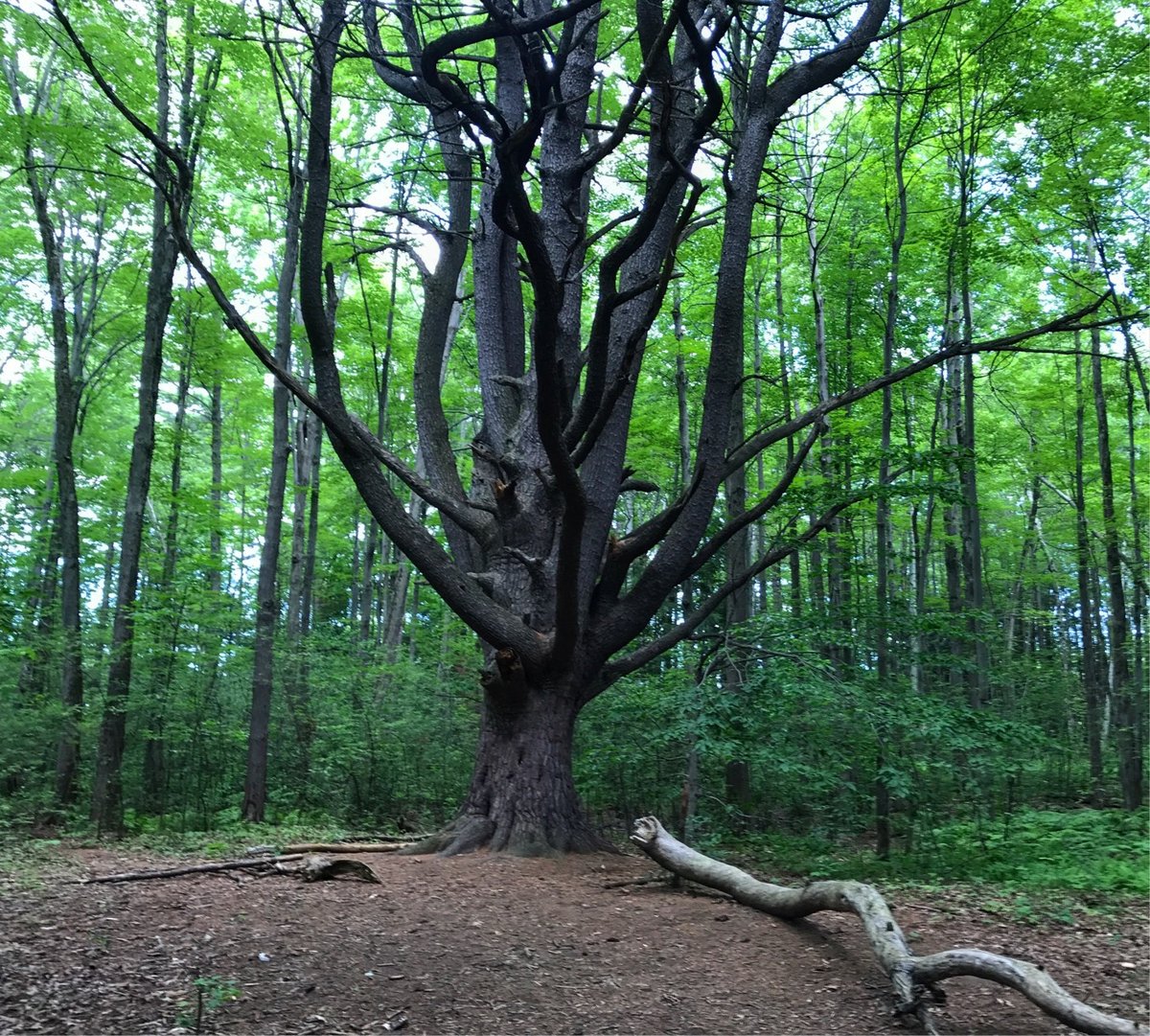Wolf trees

I took this photo of a wolf tree over the weekend. When thick forests were cleared for pasture and farming by settlers to colonial America, single trees were sometimes left by design or accident. In the absence of competition for light and space, these trees were free to branch out and not just up. They grew tall and thick, providing shade for people & animals and some cover for predators like wolves. Being the lone tree in an area, wolf trees were often struck by lightning or afflicted by pests that had nowhere else to go, contributing to their grizzled appearance.
In some cases, they grew alone like this for hundreds of years. Then, as farming moved to other places in the country, the pastures slowly turned back into forests, the new trees growing tall and straight with an old survivor in their midst. Wolf trees often look like they’re dead or dying, partially because of their age and all the damage they’ve taken over the years but also because the newer trees are crowding them out, restricting their sunlight and space. But they still function as a vital part of the forest, providing a central spot and ample living space for forest animals, particularly birds.
More reading on wolf trees, including the possible etymology of the phrase: Wolf Trees: Elders of the Eastern Forest, the Public Land Journal, and What’s up with the “Wolf Tree” at Red Rocks Park? (specifically about the tree in my photo, which might date from the 1700s). I’ll leave any possible metaphorical meaning of the wolf tree as an exercise to the reader.





Stay Connected